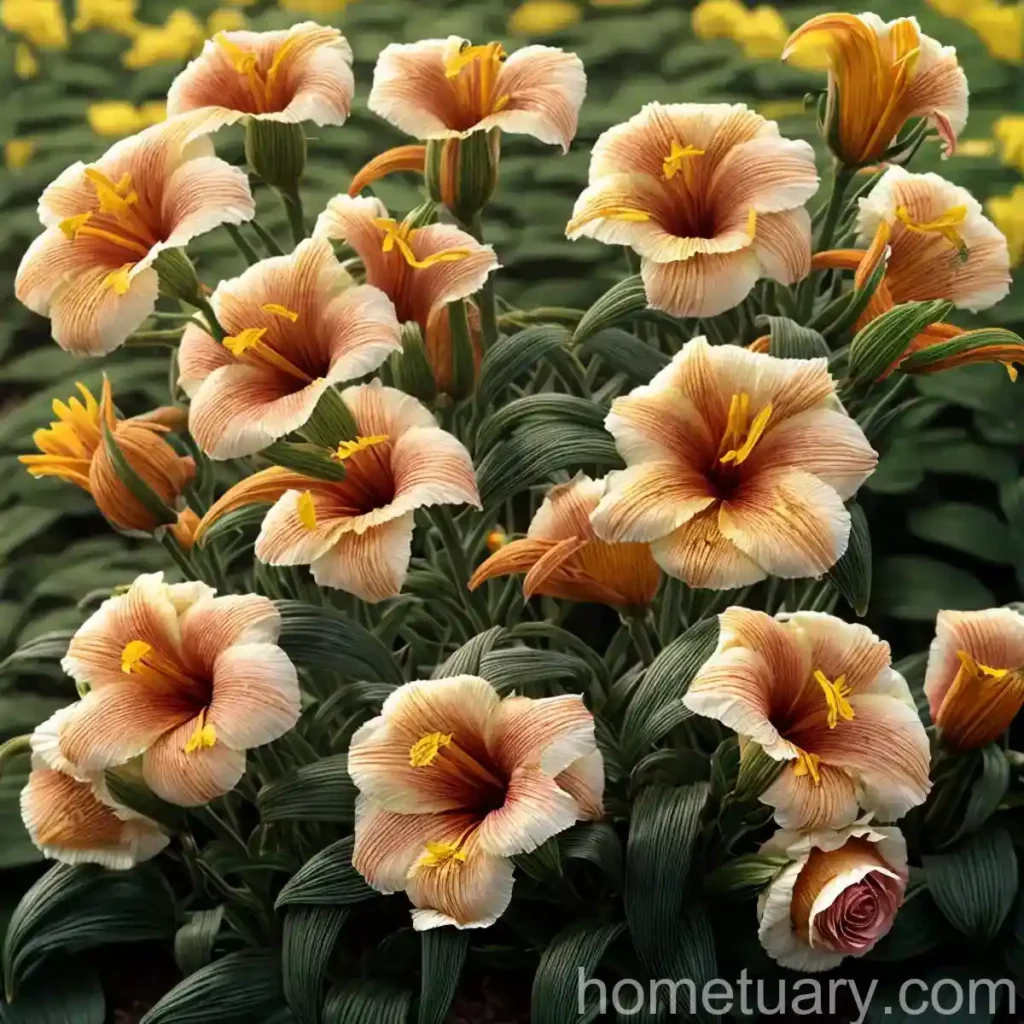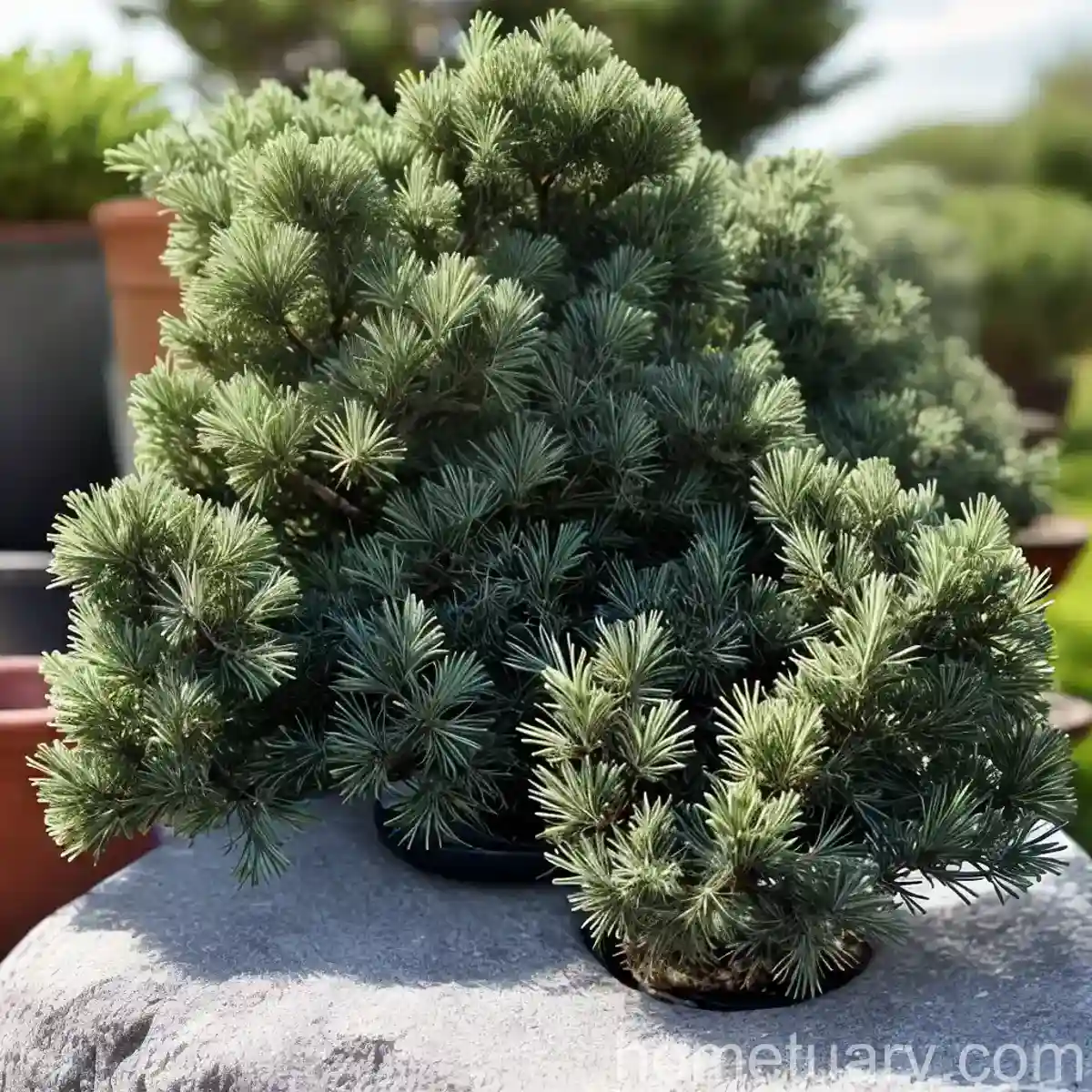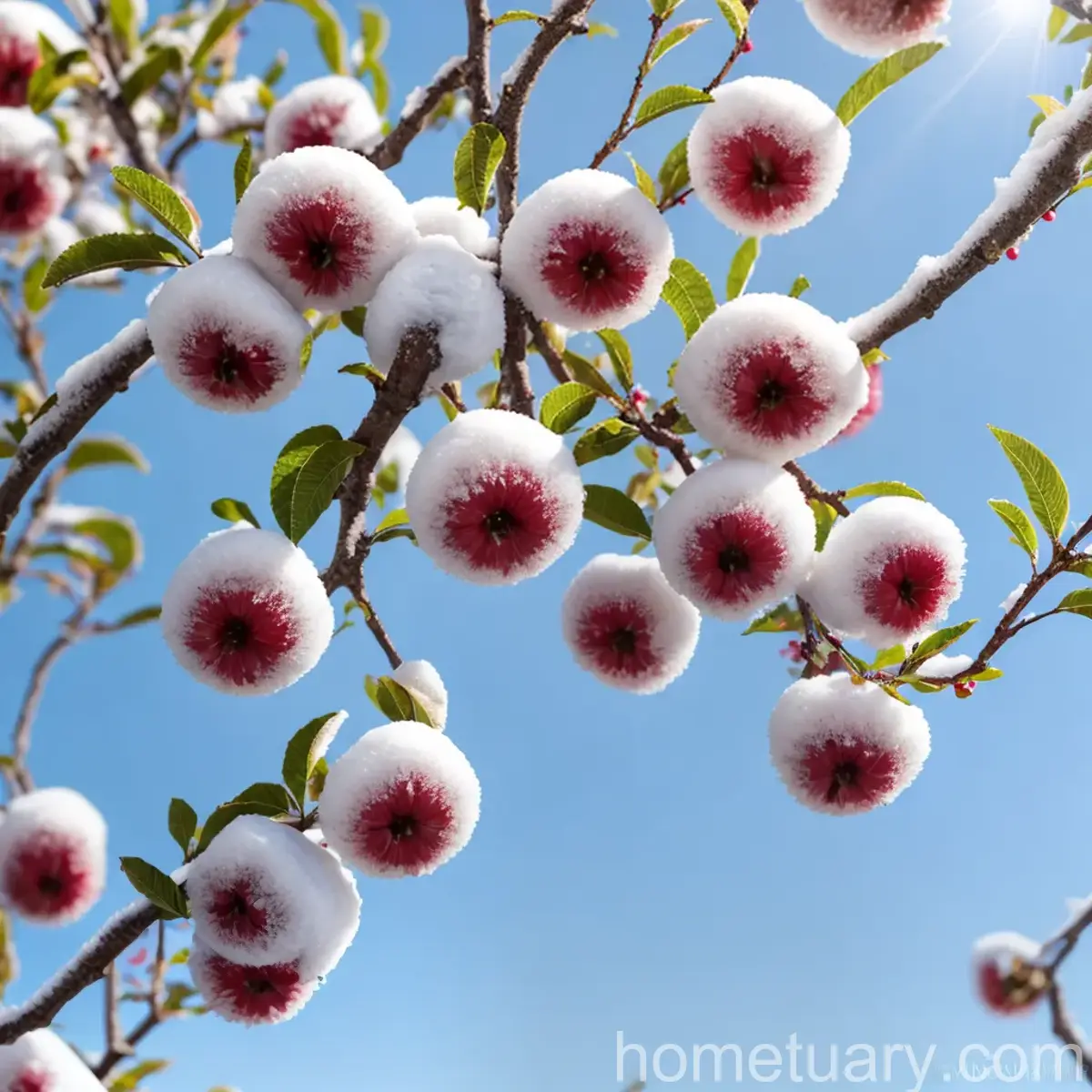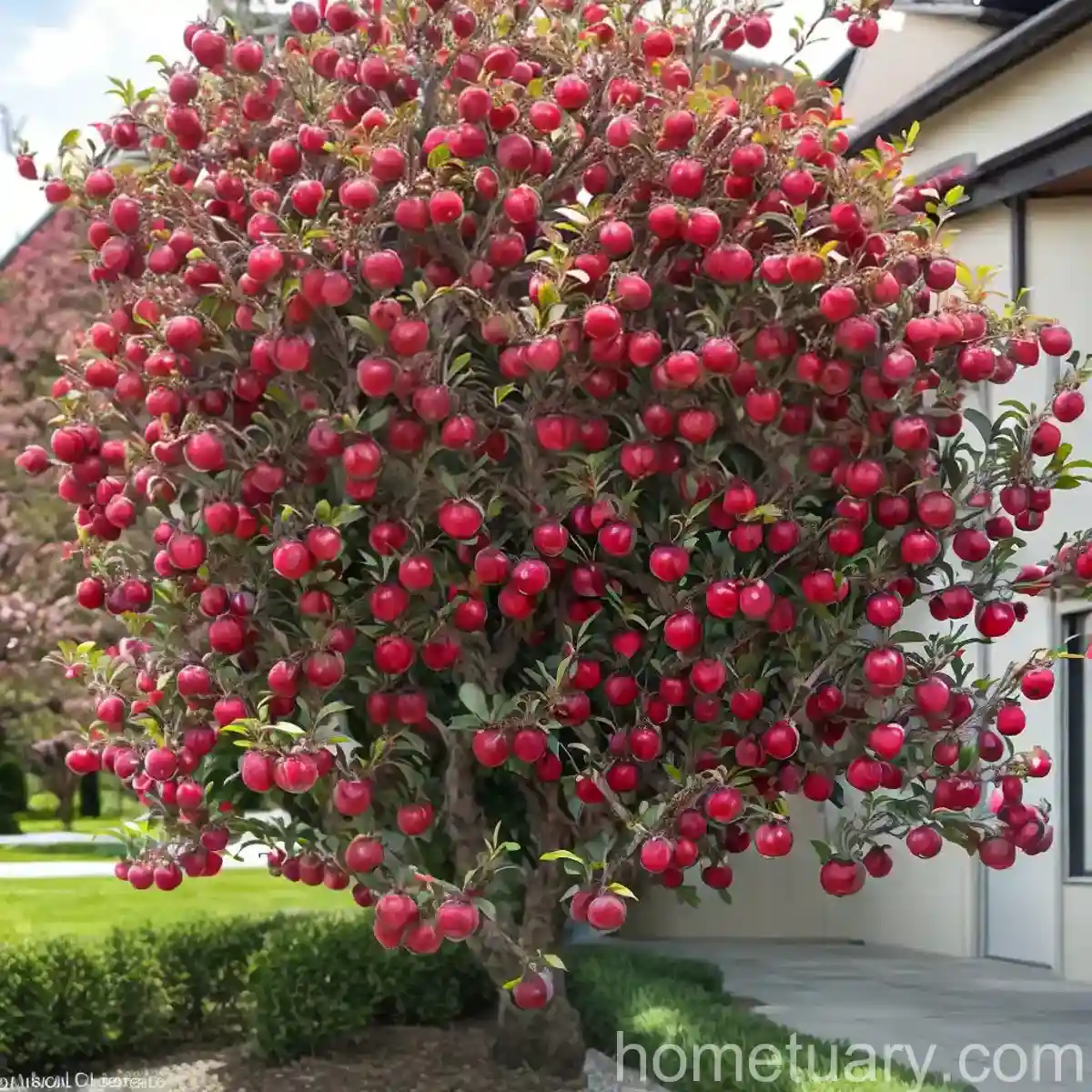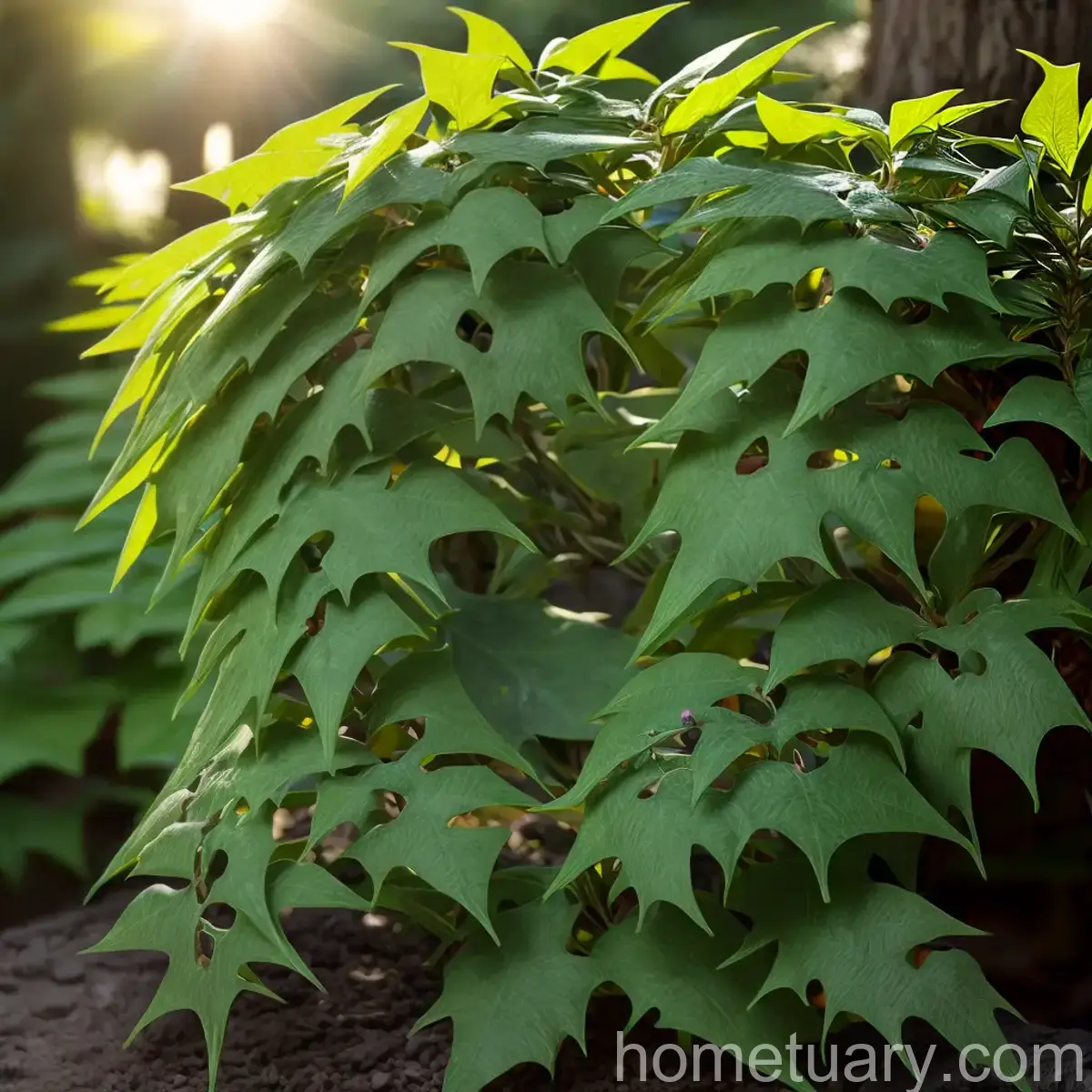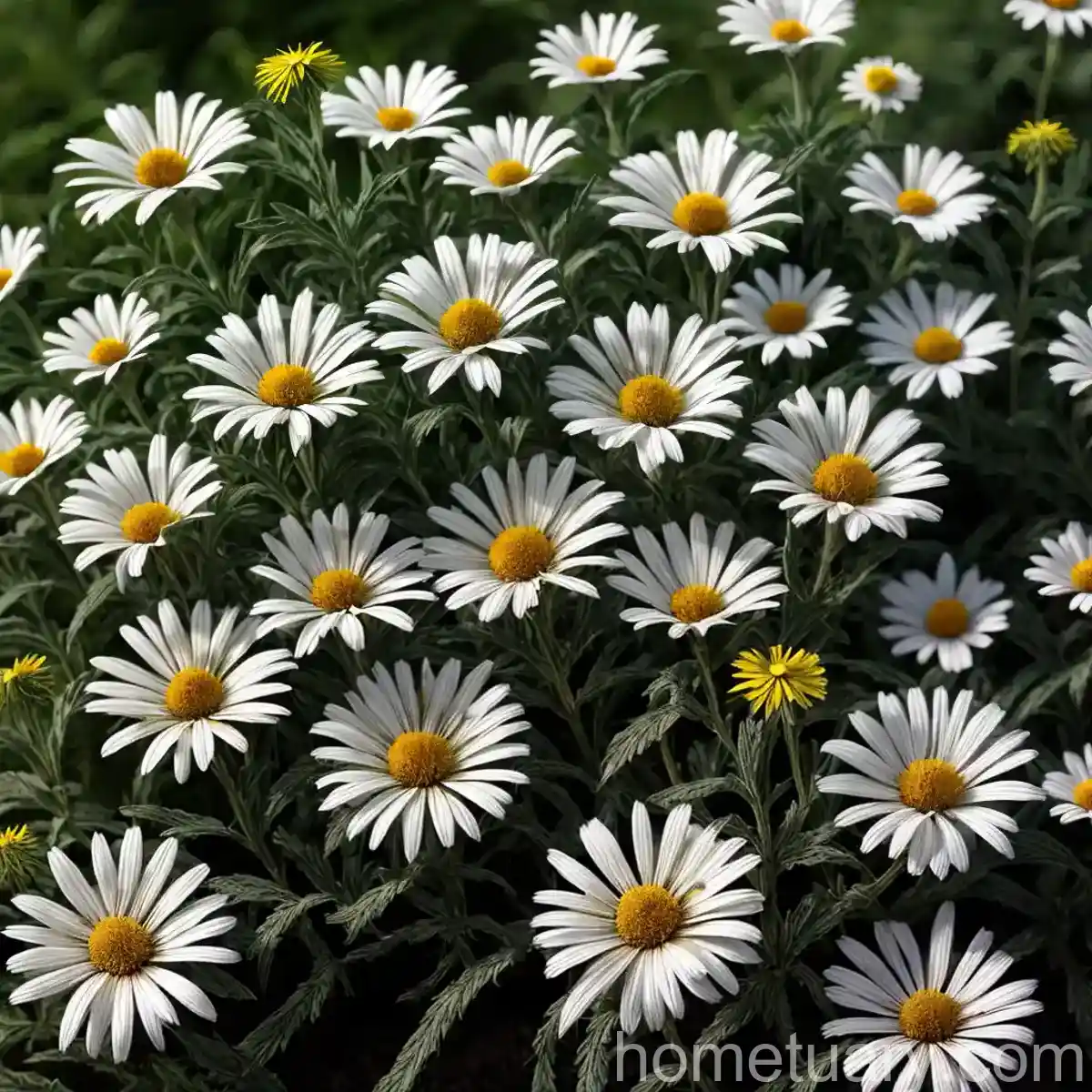The Tetraploid Daylily (Hemerocallis ‘Rose’): A Complete Guide
Plants are incredible organisms that come in a myriad of shapes, sizes, and colors, with their own unique set of requirements for growth and maintenance. One such captivating plant is the tetraploid daylily, scientifically known as Hemerocallis ‘Rose’. In this comprehensive guide, we will delve into the various aspects of the tetraploid daylily, from its culture and uses to its care needs and common diseases.
What is the Tetraploid Daylily (Hemerocallis ‘Rose’)?
The tetraploid daylily, or Hemerocallis ‘Rose’, is a stunning perennial flower that is cherished by gardeners and plant enthusiasts for its delicate beauty and ease of care. The term “daylily” is derived from the plant’s characteristic of each blossom lasting only a day, with numerous blooms appearing successively over several weeks. This remarkable plant belongs to the Hemerocallis genus, which encompasses many species, hybrids, and cultivars.
The ‘Rose’ variety is a tetraploid daylily, signifying that it has four sets of chromosomes, as opposed to the regular diploid daylilies that have two sets. This feature often results in larger, sturdier plants and flowers with enhanced vigor.
Key Takeaways – Tetraploid Daylily (Hemerocallis ‘Rose’)
Before delving into the specifics of this beautiful plant, let’s explore some key takeaways:
- Name: Tetraploid Daylily (Hemerocallis ‘Rose’)
- Scientific Name: Hemerocallis ‘Rose’
- Plant Type: Perennial Flower
- Chromosome Count: Tetraploid (4 sets)
- Blossom Characteristic: Each bloom lasts for a day
- Characteristics: Large, sturdy plants with vibrant rose-colored blooms
With these key takeaways in mind, let’s move on to understanding the culture and uses of the tetraploid daylily.
Culture
Water
Proper watering is crucial for the health and vitality of the tetraploid daylily. While this plant exhibits good drought tolerance once established, it thrives best in consistently moist, but not waterlogged, soil. During the active growing season, it is recommended to provide around 1 inch of water per week, either through rainfall or supplemental irrigation. However, it’s essential to ensure that the soil is well-draining to prevent waterlogging, which may lead to root rot and other issues.
Sunlight
Tetraploid daylilies, including the ‘Rose’ variety, are known for their exceptional adaptability to various light conditions. However, to ensure optimal bloom production and overall vigor, they should ideally receive at least 6 hours of direct sunlight per day. In hotter regions, providing some afternoon shade can be beneficial to prevent stress from excessive heat.
Fertilizer
When it comes to fertilizing tetraploid daylilies, a well-balanced, slow-release fertilizer applied in early spring as new growth emerges can provide the necessary nutrients for robust growth and prolific blooming. Additionally, applying a phosphorus-rich fertilizer can encourage abundant blooms. It is important to follow the manufacturer’s instructions for application rates, especially to avoid over-fertilization, which can lead to excessive foliage growth at the expense of blooms.
Soil
Tetraploid daylilies thrive in fertile, well-draining soil. A slightly acidic to neutral soil pH (6.0 to 7.0) is generally recommended for these plants. Amending the soil with organic matter, such as compost or well-rotted manure, can improve both the soil structure and nutrient content. While they can tolerate a wide range of soil types, ensuring good drainage is paramount to prevent issues like root rot.
Pruning
Pruning plays a vital role in maintaining the health and aesthetic appeal of the tetraploid daylily. Here are some key pointers for effective pruning:
- Spent Flower Removal: Deadheading or removing spent flowers not only improves the plant’s appearance but also encourages continuous blooming by diverting energy from seed production to new flower formation.
- Foliage Cleanup: On occasion, trimming back unsightly or yellowing foliage can enhance the overall appearance of the plant and mitigate disease issues.
- Division: Over time, clumps of tetraploid daylilies can become overcrowded, leading to decreased flowering and vigor. Dividing the plants every few years, preferably in early spring or late summer, helps rejuvenate them and maintain their health.
Propagation
Tetraploid daylilies, including the ‘Rose’ variety, can be propagated through various methods, such as division, seed sowing, and tissue culture. Here’s a brief outline of these propagation techniques:
- Division: This method involves separating the clumps of tetraploid daylilies into smaller sections, each containing healthy roots and shoots. It’s best carried out in early spring or late summer to allow the plants to establish before the onset of harsh weather.
- Seed Sowing: While hybrid daylilies are often propagated vegetatively due to the variability of seed-grown offspring, growing daylilies from seeds can yield exciting new varieties. It’s important to note that seedlings may not inherit the exact characteristics of the parent plant, and therefore, this method is commonly used by breeders to create new cultivars.
- Tissue Culture: This advanced propagation method involves growing plants from tiny pieces of plant tissue in a controlled laboratory setting. It’s a valuable technique for mass-producing genetically identical plants and preserving rare or valuable cultivars.
Container Popularity
The allure of tetraploid daylilies transcends traditional garden beds, as they also thrive and exhibit their enchanting blooms when grown in containers. The ‘Rose’ variety, with its stunning rose-colored flowers, can make a captivating addition to patios, decks, and balconies when grown in containers.
Container Gardening Tips
When cultivating tetraploid daylilies in containers, consider the following tips for successful growth and bloom production:
- Choose a spacious container with adequate drainage holes to prevent waterlogging.
- Use a well-draining potting mix enriched with organic matter to provide essential nutrients and good aeration.
- Water the container-grown daylilies thoroughly when the top inch of soil feels dry, and allow excess water to drain freely from the container.
Common Diseases
Like all plants, tetraploid daylilies are susceptible to certain diseases and pest issues that can impact their health and appearance. Understanding the common diseases and their management is essential for maintaining the vitality of the ‘Rose’ variety and other tetraploid daylilies.
Disease Diagnosis
Some of the most prevalent diseases that may affect tetraploid daylilies include:
- Daylily Rust (Puccinia hemerocallidis): It manifests as orange-brown pustules on the undersides of leaves and can weaken the plants over time. Fungicides and good cultural practices are often used to manage this disease.
- Crown Rot and Root Rot: Conditions like poor drainage and excessive watering can lead to these issues. Ensuring proper soil drainage and avoiding overwatering are crucial for prevention.
Common Pests
In addition to diseases, tetraploid daylilies, including the ‘Rose’ variety, can encounter certain pest problems. Some common pests to watch out for include:
- Thrips: These tiny, slender insects can cause stippling and distortion of leaves and flower buds. Insecticidal soap or neem oil applications can help manage thrips infestations.
- Aphids: These small, soft-bodied insects can cluster on the new growth, causing distortion and stunting. Mechanical control measures or low-toxicity insecticidal sprays are effective against aphids.
Botanist’s Tips
Through their captivating rose-colored blooms and overall resilience, tetraploid daylilies like the ‘Rose’ variety captivate the hearts of both seasoned gardeners and novices. Here are some botanist-approved tips to ensure the optimal care and enjoyment of the ‘Rose’ tetraploid daylily:
- Regular Monitoring: Periodically inspect the foliage and blooms for any signs of disease or pest infestations, intervening promptly if necessary.
- Adequate Spacing: When planting multiple tetraploid daylilies, including the ‘Rose’ variety, ensure sufficient spacing between the plants to promote good air circulation, which can help prevent disease issues.
Fun Facts
Uncovering fascinating tidbits about the Tetraploid Daylily (Hemerocallis ‘Rose’) can deepen one’s appreciation for this enchanting plant. Here are some intriguing fun facts:
- History and Symbolism: Daylilies have been cultivated for thousands of years and hold diverse symbolism in different cultures, often representing rebirth, purity, and renewal.
- Edible Blooms: The blossoms of some daylily species are edible and are used in culinary preparations in certain cultures, adding a delightful flair and mild, sweet flavor to dishes.
Links to External Resources
For further exploration and in-depth information on the Tetraploid Daylily (Hemerocallis ‘Rose’), including growing tips, folklore, and landscape ideas, the following resources are invaluable:
- American Daylily Society (ADS) – https://www.daylilies.org/
- The Daylily Hybridizer’s Art – https://www.daylilies.org/ahs_dictionary/hybridizers.html
- University of Illinois Extension – Daylilies and their Care – https://extension.illinois.edu/hortanswers/plantdetail.cfm?PlantID=218&PlantTypeID=10
- Hemerocallis: Daylilies for the Garden – https://edis.ifas.ufl.edu/ep104
- Daylilies: A Planting and Growing Guide – https://extension.umn.edu/flowers/daylilies
As we conclude this comprehensive guide to the Tetraploid Daylily (Hemerocallis ‘Rose’), it’s evident that this captivating plant has much to offer, from its vibrant blooms to its resilience in varied growing conditions. Whether adorning garden beds or gracing containers, the ‘Rose’ variety is a testament to the allure and versatility of the tetraploid daylilies, leaving a lasting impression on all who encounter its captivating beauty.
Plant Name: “tetraploid daylily (Hemerocallis ‘Rose’)”

